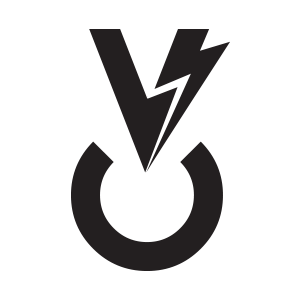This article is part of a series of inbound marketing basics for business owners and leaders of organizations. Even if you have a team of marketers implementing your inbound campaigns, you need a basic working knowledge of how inbound marketing works. And if you are a solopreneur or a small biz owner? You need to know it all! Feel free to send us questions or topics you would like to see covered in this series!
Definition of Inbound Marketing
Every business, large or small, relies on marketing to spread the word about their services. Just a few years ago a large part of B2B marketing took place through the mail: you mailed out a flyer or a catalog and followed up with a phone call several days later.
As business moved online, the old marketing tactics were adapted to a digital world. Now, rather than investing in a printed flyer you simply emailed your prospect and followed up with yet another email which pointed the prospect to a website. And that website, once designed and launched, served as a virtual catalog or brochure. It stayed the same from year to year, showing prospects the few pieces of information your web developer designed when you launched the site.
Times have changed!
The internet belongs to the consumers, now. Your prospects are online hunting for information every single day.
Google and the other search engines transformed the way your prospects do business. Now, they are educating themselves online with the information the search engines deliver on request. And your website? If it doesn’t offer compelling, useful, educational information, it won’t get found by the search engines when your customers are ready for you.
Inbound Marketing is the art and science of educating and attracting your potential customers with content that is so interesting your prospects will want to consume it.
By publishing the right content in the right place at the right time, your marketing becomes relevant and helpful to your customers, not interruptive. Now that’s marketing people can love.
–via (HubSpot, the leading marketing automation software company and the company that coined the phrase Inbound Marketing)
Inbound Marketing is not optional anymore. It is how your prospects want to learn about you. It is the way they consume information, and it must be available at the right time and place for your prospects to find you.
But what is it?
Inbound Marketing marries technology (through your website, social media channels and email marketing) with content. Your business creates high quality content in the form of blog posts, website FAQ’s, videos, podcasts or eBooks and then offers it online everywhere your prospects are searching for you.
That’s it.
No high pressure sales, no cold-calling sales process.
High quality information presented using the inbound methodology.
What is the inbound methodology?
Attract
Find the audience for your particular service. You want to grow your website traffic and get readers for your blog. But a word of caution here! You want the right readers and the right visitors. You want the particular visitors who are the most likely to become your customers. You want to build leads. This is accomplished through tailoring the content you offer to entice the niche audience you are looking for and making sure your website is set up correctly to ensure search engines find it.
Convert
When your audience begins to consider their sales decision a little more seriously, you begin to offer content that is designed to move them through the buyer’s journey. During this phase of inbound marketing, you use specific calls-to-action offering premium content that will be of interest to your audience. If you are an electronics manufacturer, you may publish an ebook that explores additional streams of income that a small electronics store may be interested in, for example. You follow up that offer with a landing page and a thank you page that contain forms to capture the email address and pertinent information about your new lead.
Close
This is where a little old-fashioned relationship building comes into play. Get to know your new prospect. Listen to their pain points, and solve them. When you solve problems for people, you become irresistible. You can tease out pain points by asking open-ended questions and following up with relevant customer examples from your own history. Inc. Magazine recommends a technique called “WWF” which stands for What We’ve Found.
When you have a real business discussion about a pain point, rather than simply pitching your solution, prospects are more likely to open up about their own problems. Even if they debate whether the problem is real, you’re having a much better meeting then just flipping through slides.
Delight
Your job is not over when you have successfully signed on a new client. In fact, now is when the real genius of inbound marketing shines. Keep your company top-of mind with your client by going above and beyond in your client relations. Forward interesting articles, send an ebook you’ve just created because you think they might enjoy it, or call just to check in on what is happening in their world. You’ll be surprised how important the “delight” phase is to maintaining long-term clients.
Measure, Analyze and Repeat
Now you take a look at your analytics. How successful have your campaigns been? What would you repeat? What initiatives returned the most on your investment of time and resources? What projects were cool, but didn’t return what you expected? Repeat what works. Look at what didn’t work and either eliminate it from your plans or tweak elements to find a successful combination.
The goal for all of these components is to move a casual surfer further along the buyer’s journey. In order to do that, you will want to create content for each stage of the buyer’s journey, from awareness through closing the deal. Each stage requires a different emphasis, and should begin a different conversation with your prospect.
